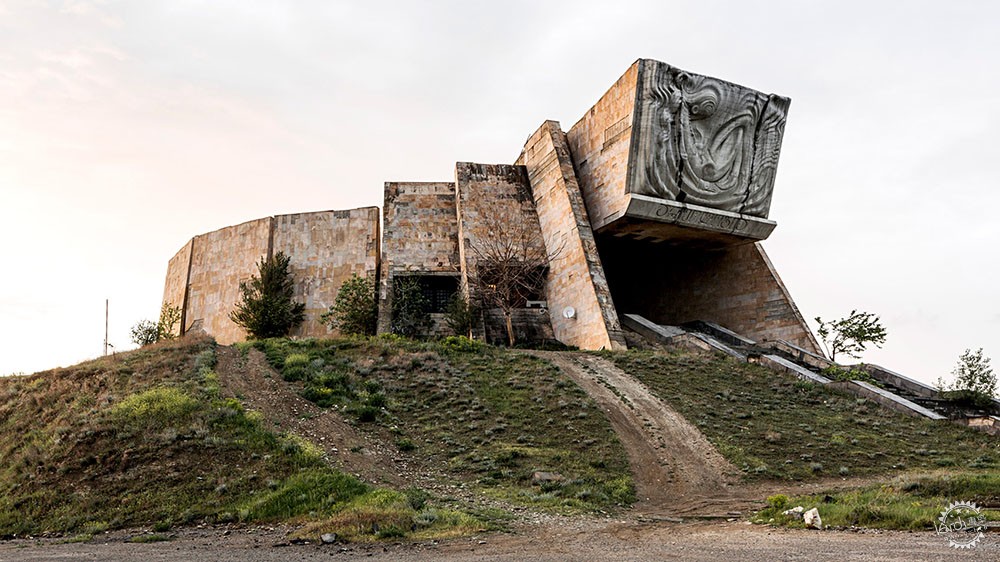
意大利摄影师在格鲁吉亚记录战后苏联建筑
Italian photographers document post-war Soviet architecture in Georgia
由专筑网缕夕,李韧编译
Roberto Conte和Stefano Perego在他们最新的摄影作品集中记录了战后苏联格鲁吉亚的建筑和纪念碑。
他们拍摄了第二次世界大战后建造的12座建筑物,这些建筑自1922年起就属于苏维埃政党,直到1991年苏联解体。
“我喜欢这些建筑物的原因是它们非常规的形态和强大的影响力,看看前苏联的建筑设计与建造方式很有意思。”Perego说。
Roberto Conte and Stefano Perego have captured the architectureand monuments of post-war Soviet Georgia in their latest photography collection.
Conte and Perego took photographs of 12 buildings built after the Second World War, in the country that was part of the Soviet Union from 1922, when it was established, until its fall in 1991.
"What I like about these buildings is their unconventional beauty and powerful impact, and it's interesting to see how each country of the former Soviet Union developed its own approach to planning and building," said Perego.
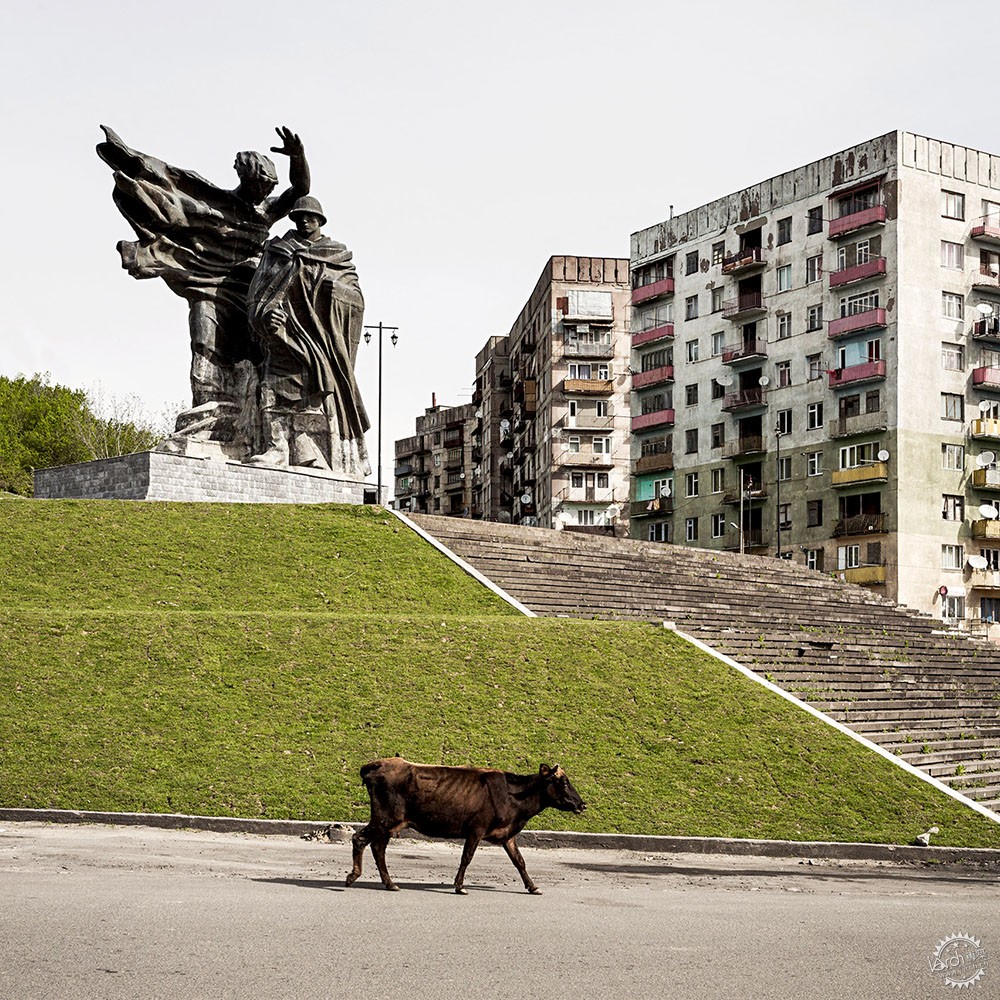
Roberto Conte和Stefano Perego在佐治亚州拍摄了苏联时代的建筑/Roberto Conte and Stefano Perego took pictures of Soviet-era architecture across Georgia. Photo is by Stefano Perego
该系列包括格鲁吉亚首都第比利斯的一对标志性建筑,即前公路建设部(现为格鲁吉亚银行的总部),该项目由George Chakhava和Zurab Jalaghania于1975年设计建造,以及由Victor Djorbenadze在20世纪80年代中期设计建造的仪式宫殿。
“它们是格鲁吉亚建筑遗产的一部分。”Conte说,“在国际建筑师参与当代第比利斯建设之前,当地建筑师设法设计出极具吸引力的建筑,吸收全球和苏联的精华所在,然后将其与当地特有的风格融为一体。”
The collection includes a pair of iconic buildings in Georgia's capital Tbilisi – the former Ministry of Highway Construction (now the headquarters of the Bank of Georgia), built by George Chakhava and Zurab Jalaghania in 1975, and the Palace of Rituals, built by Victor Djorbenadze in the mid 1980s.
"They are a part of the Georgian architectural heritage," said Conte.
"Before the involvement of international architects in contemporary Tbilisi, local architects managed to design extremely interesting buildings absorbing global and Soviet influences and then merging it with a peculiar local style."
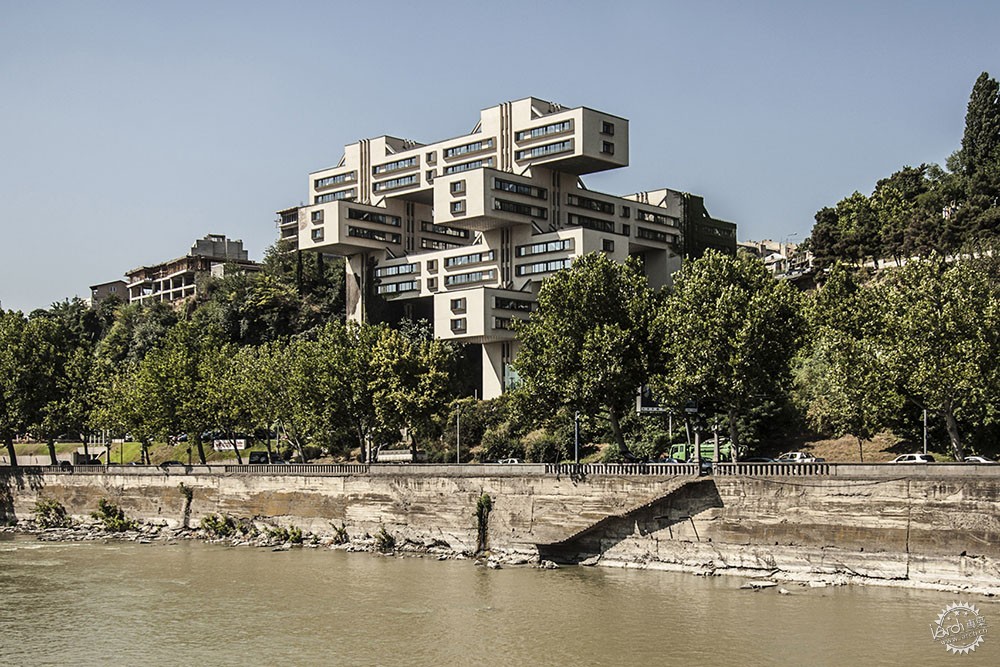
该系列摄影作品包括格鲁吉亚苏维埃社会主义共和国的公路建设部/The collection includes the Ministry of Highway Construction of the Georgian Soviet Socialist Republic. Tbilisi. Photo is by Roberto Conte
Chakhava和Zurab的几何创作引起摄影师的关注,因为它的形状复杂,并且有着河岸边的地理优势。
“设计本身令人惊讶,与苏联艺术家兼建筑师El Lissitzky在20世纪20年代设计的水平摩天大楼之间存在一种融合。”Conte解释说。
Chakhava and Zurab's geometric creation appealed to the photographers because of its complex shape and unusual position alongside a river.
"The design itself is absolutely astonishing, with a kind of mixture between metabolism, and the horizontal skyscrapers planned by the Soviet and constructivist artist-cum-architect El Lissitzky back in the 1920s," explained Conte.
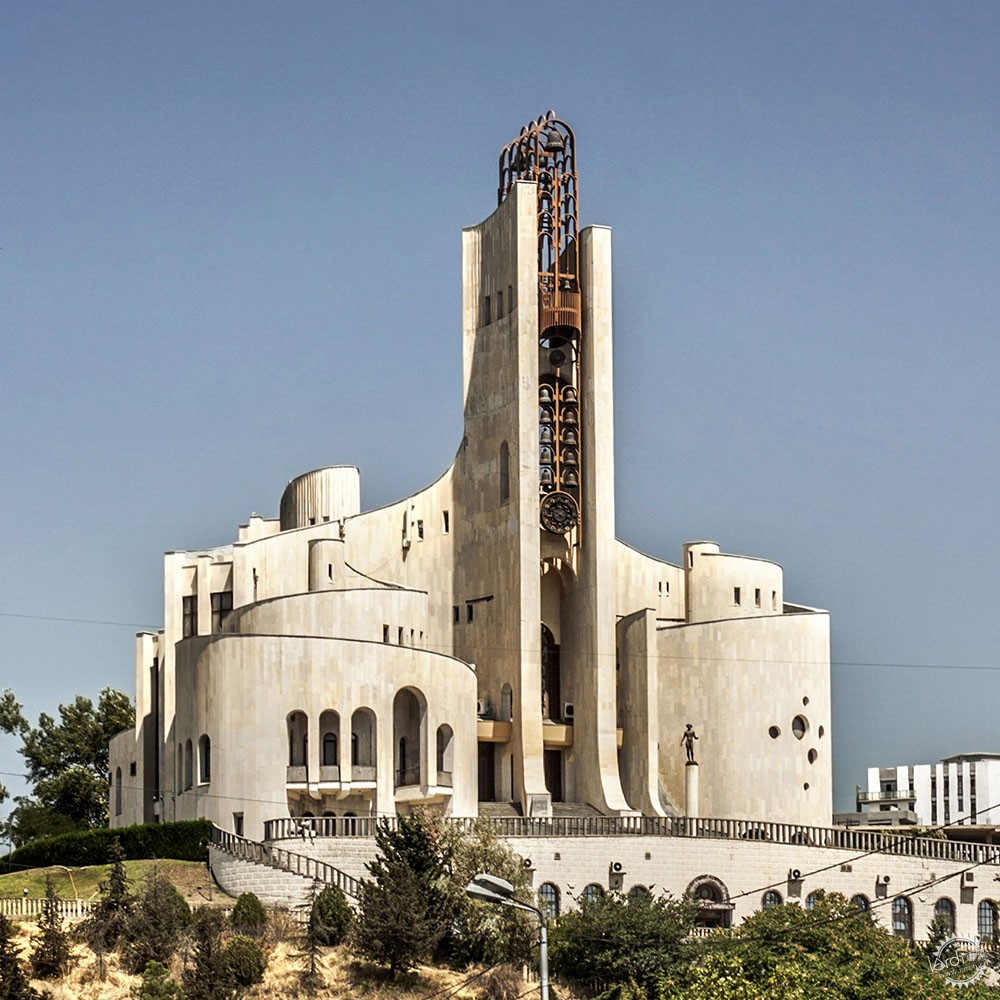
第比利斯的仪式宫殿/A photo of the Palace of Ritals in Tbilisi is included in the series. Photo is by Roberto Conte
仪式宫为非宗教婚礼和仪式提供庄严的场所。苏联官方上是无神论国家,在其统治期间,此类建筑主要用于代替礼拜场所。
“我们在前苏联看到了很多这样的建筑,但第比利斯的那些建筑通常矗立在山顶,其优雅、曲折和带有表现主义气息的线条深深吸引了我们。” Conte说。
The Palace of Rituals was built to provide a solemn place for non-religious weddings and rituals. The Soviet Union was officially atheist and during its reign many of these structures were built to use in place of spaces of worship.
"We have seen many of those structures in our travels in the former Soviet Union but the one in Tbilisi, with its elegant, sinuous and almost expressionist lines, moreover standing on the top of a hill, is probably our favourite," explained Conte.
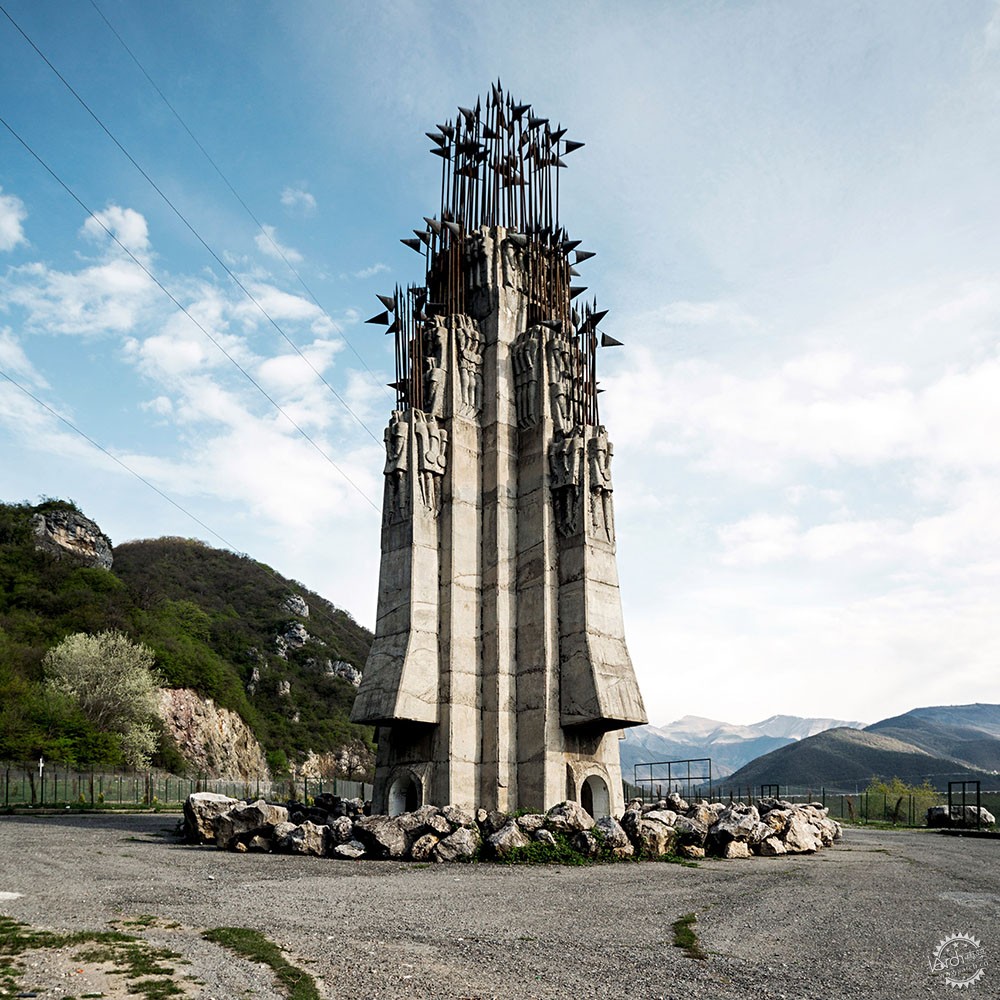
Zhinvali的Aragveli纪念碑/A photograph of the Aragveli monument in Zhinvali features in the collection. Photo is by Stefano Perego
其他摄影作品包括雕塑、纪念碑、教育建筑、外墙装饰浮雕和办公大楼。摄影作品也反映了许多建筑物当前所处于的失修状态,它们有可能被拆除,抑或进行翻新。
“即使它们不是很出名,这些建筑也有令人印象深刻的设计和非常强烈的视觉冲击力。它们描述了时代的艺术价值、创造力和探索力。” Perego解释道。
Other images feature sculptures, monuments, educational buildings, decorative reliefs on otherwise severe facades, and office blocks. Many of the buildings are in various states of disrepair; at risk of falling into ruin, or being condemned in place of new developments.
"Even if they are not very well known, these buildings have an impressive design and a very strong visual impact. They tell a lot about an era and its artistic value, an era of creativity and experimentation," explained Perego.
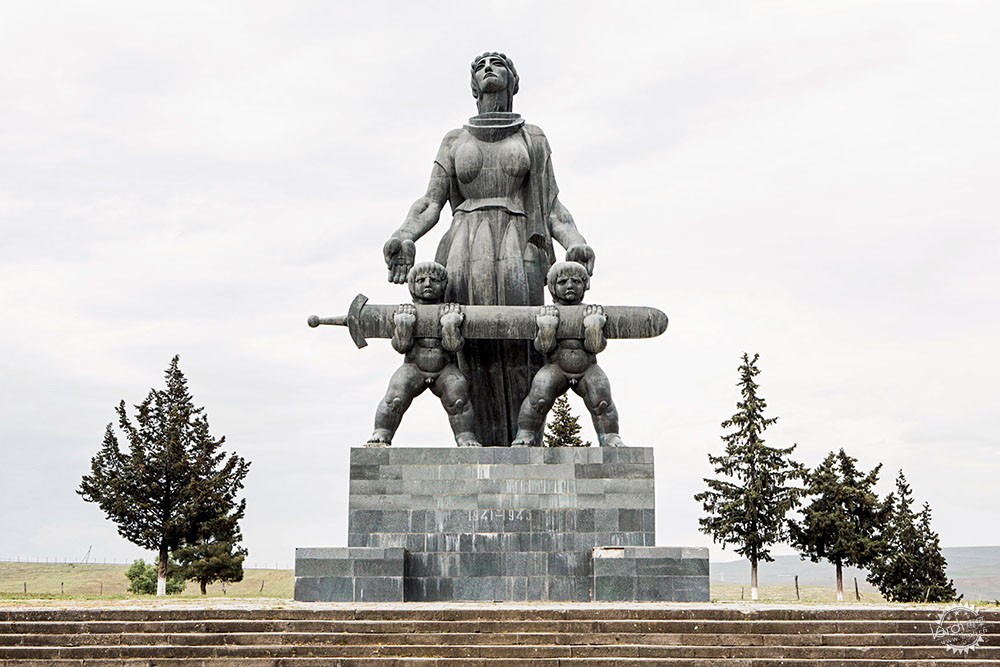
该系列还包括由Merab Berdzenishvili设计的“And They Shall Grow”/The collection also includes "And They Shall Grow", a sculpture by Merab Berdzenishvili. Photo is by Stefano Perego
Perego和Conte相识于2006年,他们同时拍摄了米兰郊外的废弃场所。另外,他们还一起继续探索和研究在建筑环境中捕获的废弃建筑和各种其他历史主题作品。
“我们的研究让我们接近森林中的废弃苏联军队基地。对于这些地方的探索引起人们对近代历史的兴趣。” Conte 对Dezeen记者说。
“而柏林墙另一边所发生的事情则是一种自然的结果。”
Perego and Conte met in 2006 while both photographing abandoned places on the outskirts of Milan. Together they continued to explore and research deserted architecture and various other historical themes that are captured in the built environment.
"Our research brought us towards the abandoned Soviet Army bases scattered all over the woods of former East Germany. Exploring those places raised the interest in that part of our recent history," said Conte to Dezeen.
"It was a kind of natural consequence to end up seeing what happened on the other side of the Berlin Wall."
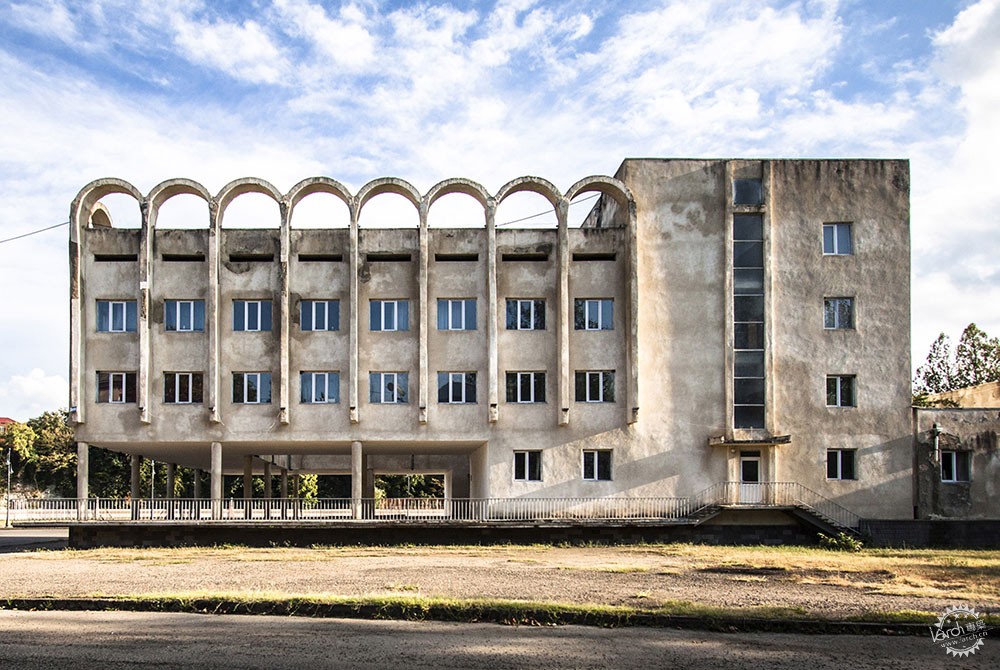
受粗野主义影响的艺术学校也被记录在该系列中/The brutalism-influenced art school in Zestafoni, was also photographed for the series. Photo is by Roberto Conte
奥地利摄影师Gregor Sailer在名为The Potemkin Village的系列中记录了“假城市”,其中包括一座具有纽约风格的瑞典汽车测试中心,还有位于中国的“欧洲”城市,以及美国和欧洲的战斗训练城镇。
Austrian photographer Gregor Sailer collected images of eerie fake cities in a series called The Potemkin Village, including a Swedish car-testing facility built to look like New York, faithful replicas of European cities in China, and combat training towns in the US and Europe.
|
|
